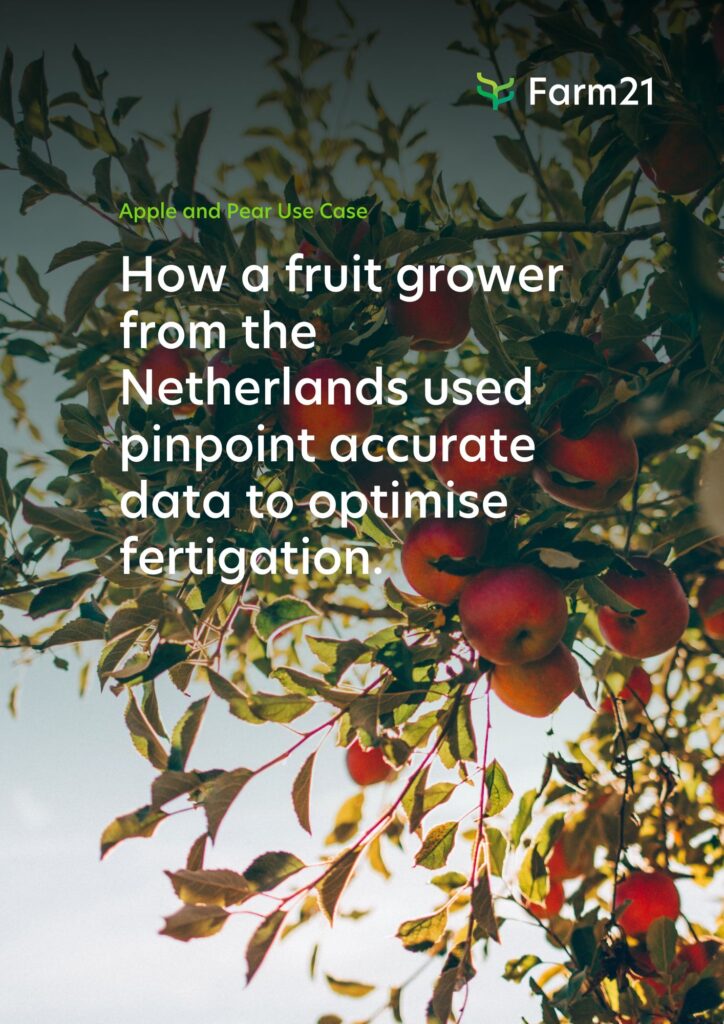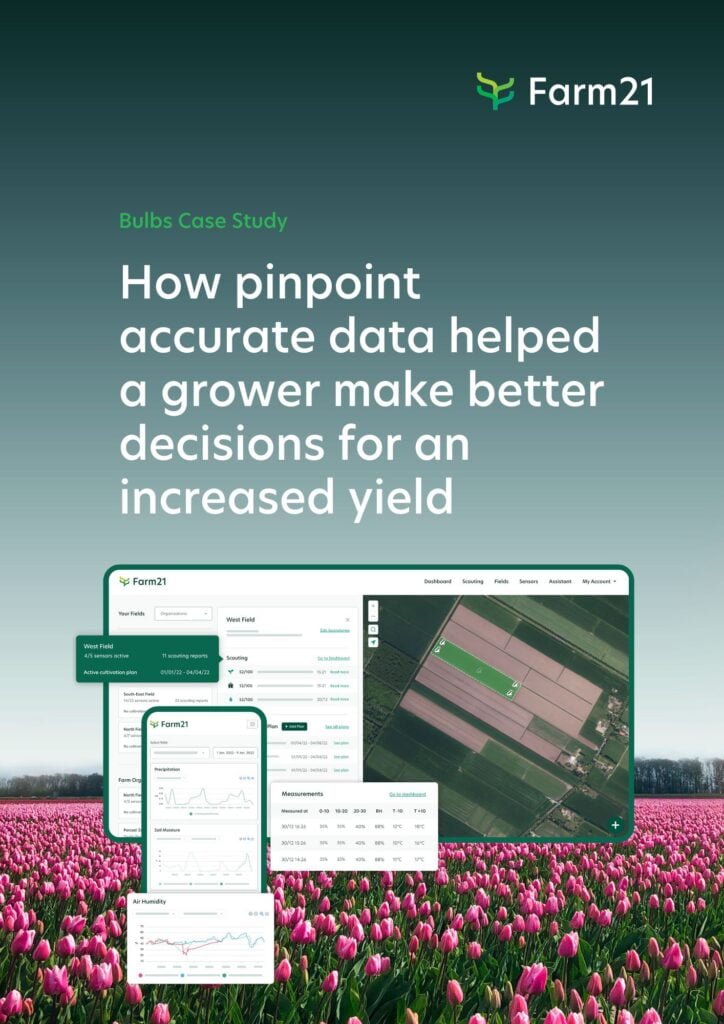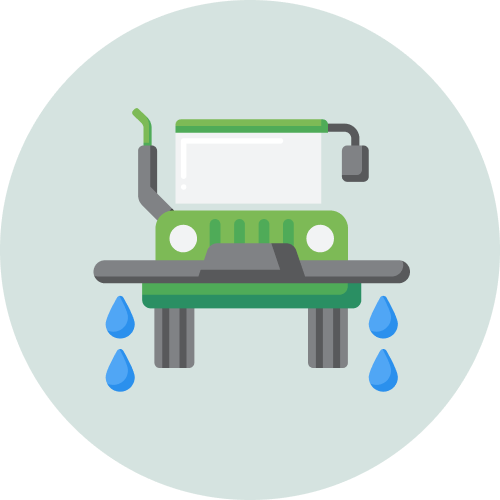Get the most out of your soil temperature and moisture sensor data.
Soil temperature and moisture are two of the most important factors that determine the health and productivity of crops. Soil temperature and moisture sensors are an essential precision farming tool for growers and crop advisors who want to optimise crop yields and improve their farming practices.
Measurements that make sense.
As a grower or crop consultant, you understand that soil temperature and moisture levels play a crucial role in the growth and yield of crops. However, monitoring these variables can be a tedious and time-consuming task, requiring frequent manual measurements and visual inspections.
This is where soil temperature and moisture sensors come in. This tool has become increasingly popular among growers and advisors due to their ability to provide real-time data on soil conditions. This data can be used in a variety of ways to optimise crop growth and yield.
Three Best Uses for Soil Temperature and Moisture Sensor Data
1. Water and irrigation management
Soil moisture sensors provide accurate, real-time information about the moisture level in the soil. This can help growers and crop advisors to optimise their irrigation or watering schedules to reduce water usage and ensure plants receive the exact amount of water needed. An optimised irrigation regime is crucial for the growth and health of crops. Let’s take a closer look at how optimised irrigation regime can help crops thrive:
- Water Efficiency: An optimised irrigation regime can help maximise water use efficiency. By providing the right amount of water to crops, they can grow more efficiently. Additionally, when implementing a deficit or (regulated deficit) irrigation strategy, soil moisture data can play a vital role in perfecting it. The process requires careful management and monitoring to ensure that the plants do not experience too much water stress (which can lead to reduced yields or poor crop quality).
- Nutrient uptake: Water is an essential component of the nutrient uptake process. By providing the right amount of water, crops can take up nutrients from the soil more efficiently, which can result in better crop yields.
- Root Development: An optimised irrigation regime can help promote root development. By providing consistent moisture levels to crops, or withholding water when needed, the roots can grow deeper and more robust, allowing for better nutrient uptake and water absorption.
- Reduced Stress: As mentioned above, water stress can negatively impact crop growth and yield. Water is essential for many plant processes, including photosynthesis, nutrient uptake, and cell expansion. An optimised watering schedule can help reduce water stress by providing consistent moisture levels to crops, which ultimately result in healthier, more robust plants.
- Disease prevention: An optimised irrigation regime can also help prevent the spread of diseases in crops. By reducing water stress and providing consistent moisture levels, plants are less susceptible to disease.
Let’s look a typical example of what this will look like in practice:
An apple grower calculated that he needs to keep his field’s volumetric water content at 11% for sandy soil and 40% for loam clay soil to keep the soil tension at around 70-80 KPa at a particular point in the growth cycle. This results in optimal fruit growth for the best quality yield. By placing correctly calibrated soil sensors strategically within his fields, he can get real-time accurate information about the soil’s volumetric water content and manage his watering regime accordingly.

Farm21 Apple and Pear Use Case
‘”By using the Farm21 sensors and platform, I can continuously control the amount of fertigation that I apply with drip irrigation. Without these sensors, it would be really expensive to cover all the different soil types.
Because these sensors are more affordable, I have more control over my fields with better insights to produce the best quality apples and pears.” – Martijn Slabbekoorn, Slabbekoorn Fruit
2. Pest and disease control
Accurate soil moisture and temperature data can be a valuable tool for disease control, enabling farmers and crop advisors to detect, forecast, and manage disease outbreaks more effectively, and reducing the need for expensive and environmentally damaging chemical treatments. Here are several ways in which accurate soil moisture and temperature data can assist growers to keep pests and diseases under control:
- Early detection of pests and disease: Soil moisture and temperature sensors can detect changes in the soil environment that may indicate the presence of plant diseases or pests. For example, some pests thrive in warm, moist soils, so monitoring soil temperature and moisture levels can help growers identify areas of the field that may be at higher risk for certain pests.
- Disease forecasting: By monitoring soil moisture and temperature levels, growers can predict when conditions are favourable for disease development and take proactive measures to prevent outbreaks. For example, if sensors indicate that soil moisture levels are consistently high in a certain area of the field, growers may choose to adjust their planting schedule or implement other disease prevention strategies to reduce the risk.
- Tailored pest and disease management: Soil moisture and temperature data can help farmers and crop advisors tailor their strategies to the specific needs of each field.
- Improved fungicide efficacy: Accurate soil moisture and temperature data can help farmers and crop advisors optimise fungicide application by timing it to coincide with periods of high disease risk. By targeting fungicide application when conditions are most favourable for disease development, growers can maximise the effectiveness of their treatments and reduce the amount of fungicide needed to achieve control.
Here’s a practical example of how soil temperature can help prevent pest and disease damage:
In flower bulb cultivation, for example, many diseases are spread by viruses that thrive at a certain temperature. A flower bulb grower from The Netherlands noticed that weather applications measured the temperature below crop canopy at 12°C, but on a specific field, the sensor measured 15°C. At this temperature, lice become active and can potentially pose a threat to his delicate tulips. He could put the necessary measures in place to prevent this for quality yield.

Farm21 Flower Bulb Use Case
“Thanks to the Farm21 sensor, we have noticed that the air temperature on the ground (+10cm), at crop height can quickly warm up to 15°C while the air temperature at (1,5 m) still indicates 12°C to 13°C.
We take the necessary action to prevent lice from harming the tulips.” – Pascal Alkemade, Flower Bulb Grower
3. Planting and harvesting timing
Soil temperature sensors can help growers determine when to plant and harvest their crops. Different crops have different temperature requirements for germination, and planting too early or too late can affect yield. Similarly, soil moisture levels can affect the timing of harvest, as dry soil can make it more difficult to remove crops from the ground. Here’s how these insights can help growers planting and harvesting
- Planting time: Soil temperature data can help growers determine when the soil is warm enough to support the germination of seeds. Most seeds require a certain minimum temperature to germinate, so by monitoring the soil temperature, growers can determine the best time to plant their crops. This is further enhanced by measuring soil temperature at different depths. Additionally, soil moisture data can help ensure that the soil has enough water to support the germination process.
- Harvest time: Soil moisture data can help growers determine when their crops are ready for harvest. If the soil is too dry, the crops may not have enough moisture to reach their full potential. On the other hand, if the soil is too wet, the crops may become waterlogged and prone to disease. By monitoring soil moisture levels, growers can ensure that their crops are harvested at the optimal time.
Five benefits of using soil temperature and moisture sensors in agriculture
Soil temperature and moisture sensors are a vital tool in modern agriculture. By providing real-time data on soil conditions, it allows growers to make informed decisions about a number of factors including watering, pest control, planting and harvesting, resulting in healthier crops and profitable yields. Let’s explore 5 benefits in more detail:
- Improved crop health: Soil temperature and moisture sensors provide farmers with accurate and reliable data on soil conditions, allowing them to make informed decisions about irrigation schedules. This can prevent over-watering or under-watering, which can lead to waterlogging, root rot, or crop stress.
- Increased efficiency: By optimising irrigation and fertilisation schedules, growers can reduce waste without compromising yields. This can lead to improved profitability for farmers and a more balanced farming system overall.
- Precision farming: Soil temperature and moisture sensors are a crucial component of precision farming practices. By using real-time data to make informed decisions, farmers can optimize crop production, reduce waste, and promote sustainable farming practices.
- Scalability: Soil temperature and moisture sensors can be used in fields of all sizes, making them an ideal solution for farmers looking to implement precision farming practices on a small or large scale.
- Improved sustainability: By optimizing crop production, reducing waste, and promoting sustainable farming practices, the use of soil temperature and moisture sensors can contribute to a more sustainable and food-secure future for all.
Farm21’s soil temperature and moisture sensor solution
Farm21’s soil moisture sensor and data platform solution is a user-friendly and affordable system designed to help farmers monitor soil moisture levels and optimise irrigation schedules. The solution consists of wireless soil moisture sensors that can be easily installed in the field and connected to the Farm21 data platform and app.
The data platform provides real-time insights from multiple sources so users can make data-driven decisions. The solution is affordable, making it accessible to small-scale farmers, and requires no technical expertise to install and use, making it easy for growers to incorporate into their existing operations.


Take Action
Treat, spray & irrigate crops with sensors in place
Long Lasting
Recharge battery with USB-C and lasting a full year on a single charge
Measure
Measures right under the crop canopy for actual crop climate
Connectivity
Narrowband-IoT,
LTE-M & 2G connectivity for easy deployment
Affordable
5 to 10 times more affordable than any competing device
API Integration
Instead of using our platform, integrate your own through the API
Easy Installation
Factory calibrated, done in 30 seconds
Modular Design
Our sensors support
other modules or third-party sensors
Soil temperature and moisture sensor data can provide growers, crop advisors and other agri professionals with valuable insights to optimise their operations.
Investing in soil temperature and moisture sensors can be an excellent strategy for growers looking to improve their bottom line and produce higher quality crops.
